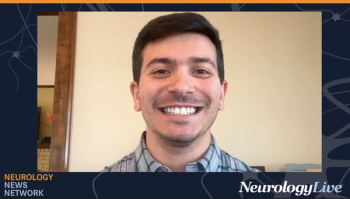
Data from Other Emerging Alzheimer’s Disease Treatment Options from CTAD 2022
Expert neurologists share information on drugs with different mechanisms of actions that are being evaluated in clinical trials for Alzheimer’s disease.
Episodes in this series

Marwan Sabbagh, MD: I have to say I’m excited about the progress we’re making with the mabs [monoclonal antibodies], particularly lecanemab and donanemab. But there are other drugs with data being reported on at CTAD [Clinical Trials on Alzheimer’s Disease] 2022, and we’ll start out with valiltramiprosate. Ali, you know this area well. It’s also known as ALZ-801, which is the APOLLO study. It’s a unique population they went after. That’s exciting. Can you comment about that one?
Alireza Atri, MD, PhD: Yes, this is a prodrug of tramiprosate that was studied about 15 years ago or so.
Marwan Sabbagh, MD: We’re aging ourselves, but that’s true, 15 years ago.
Alireza Atri, MD, PhD: Yes. Back then, we would do these studies, and they were always based on something, there was some signal there. Ultimately, when then went back and did the analysis, they’ve chosen a different kind of precision medicine. They’ve gone with APOE4 [apolipoprotein E] homozygous. The homozygotes, probably 96% to 98% of them, if you also then have the clinical phenotype, are probably going to have amyloid. It’s focusing on them. It’s a drug that decreases aggregation of potentially soluble toxic forms. It’s oral, twice a day. In tramiprosate there weren’t any ARIA [amyloid-related imaging abnormalities] or other adverse effects. If ultimately that’s ongoing, if that’s something that shows benefit, that slice is about 15% of individuals who end up in clinical trials. It’s not a huge slice, but it’s a significant group. That’s under study. Of course, the study has to be completed.
Sharon Cohen, MD, FRCPC: Can I say something about the phase 2 data for valiltramiprosate? It was largely a biomarker study that enrolled APOE4 homozygotes and heterozygotes. There was also a press release in September, although maybe drowned out a bit by the lecanemab excitement, but was presented at CTAD 2022, that these individuals had clinical benefit with this oral drug that prevents oligomeric amyloid formation. They had a benefit to symptoms, so a symptom improvement up to 6 months, and then stabilization of disease. So we’re thinking disease modification, but here, wouldn’t it be great if we could have a drug that improves symptoms and stabilizes disease, is oral, and has minimal adverse effects?
Marwan Sabbagh, MD: That’s important of course, because the questions that are starting to emerge when we look at the monoclonals include, would we select valiltramiprosate in an APOE4 homozygote population out of safety concerns with the monoclonals? Those are the things we are going to decide with time, over practice.
Sharon Cohen, MD, FRCPC: It’s great to have options for patients.
Marwan Sabbagh, MD: It’s great to have options. You have been following LMTM, the hydromethylthionine mesylate story, for some time. Can you comment about that?
Sharon Cohen, MD, FRCPC: It’s an intriguing story. This is a tau aggregation inhibitor, is the correct way of phrasing this. The idea is good, but the studies to date have not shown clinical benefit. And yet, the company, TauRx [Pharmaceuticals], has been bold in continuing despite the failures on previous phase 3 trials. Now at CTAD 2022, they read out another phase 3 trial with this drug, and again, in the double-blind, placebo-controlled segment of the study, in mild to moderate AD [Alzheimer disease]—they included MCI [mild cognitive impairment] in there down to moderate stage—there was no benefit seen on the clinical outcome. But they’re still encouraged to continue with the open-label trial. It’s intriguing. I’m not quite sure what they feel will be gained. In my mind, the hypothesis has been proven that this drug doesn’t provide clinical benefit, but that’s not the company’s thinking.
Marwan Sabbagh, MD: There was also a report on blarcamesine, which is a sigma-1 and muscarinic receptor agonist. We know that we’ve seen muscarinic receptor agonists tried before, which would be theoretically symptomatic benefit with a procholinergic [drug]. But as far as I can tell, the previous attempts at this haven’t been successful. But targeting sigma-1 makes sense from a biological standpoint because sigma-1 has a lot of endogenous, endocellular type of activity. I’m excited to see where that’s going to go. Another one I’ve been following is the fosgonimeton, which is ATH-1017. This is an HGF/MET receptor agonist, and basically it has a trophic effect, improving synaptic activity and NMDA [N-methyl-D-aspartate] activity. I’ve been following that story for a long time. But I think we’ll see where the LIFT-AD trial data, which will read out in the next few months, where that’s going. That’s a daily injectable drug, but has a dual mechanism of action. So I’m excited to see where that goes. You have been following the semaglutide story for a bit of time, both of you. Why don’t you both comment about those.
Sharon Cohen, MD, FRCPC: I’m excited about the potential of semaglutide, a GLP-1 receptor agonist. This is repurposing from the diabetes world. There are limited clinical trial data in the Alzheimer population, but there are a lot of data, safety and real-world data, and controlled trial data, in the diabetic population that are suggestive that this drug may be helpful in Alzheimer disease, as something that targets the immune system and reduces both central inflammation in the brain and peripheral inflammation. The lines of evidence are manifold. And now there are these 2 large phase 3 trials, which are still ongoing and still enrolling subjects, that will give us a definitive answer as to whether we have another potential oral disease modifier with a very well-characterized safety profile, that’s important, and that can be used in MCI and mild AD dementia.
Marwan Sabbagh, MD: Did you want to add anything?
Alireza Atri, MD, PhD: I agree. Again, it’s different mechanism. It’s a GLP-1 receptor agonist, a glucagon-like peptide-1 receptor agonist, that has approval in the United States both for diabetes and for weight loss. As Dr Cohen mentioned, the class probably has [up to] 8 million patient years of safety data. Both basic science data about how it may affect neuroinflammation and maybe the link between neuro-inflammation and tangles, possibly. What effects it may have on the blood-brain barrier, on energy metabolism in brain cells. All the way to these large cardiovascular studies, that when they were looking at adverse effects, they noticed that patients were having fewer adverse effects of dementia. There’s that, and they’ve gone to other databases and looked at that. Also, for liraglutide, a different GLP-1 receptor agonist, there have been some limited data in AD with FDG-PET [fluorodeoxyglucose-positron emission tomography]. Again, those all showed small signals, they weren’t large, they weren’t powered enough for things, so hence, these 2 large studies. Going back to what you and Dr McDade were talking about, the portfolio of our approaches to AD is large now. It needs to be, because ultimately, we need to put these in combination.
TRANSCRIPT EDITED FOR CLARITY
Newsletter
Keep your finger on the pulse of neurology—subscribe to NeurologyLive for expert interviews, new data, and breakthrough treatment updates.























































